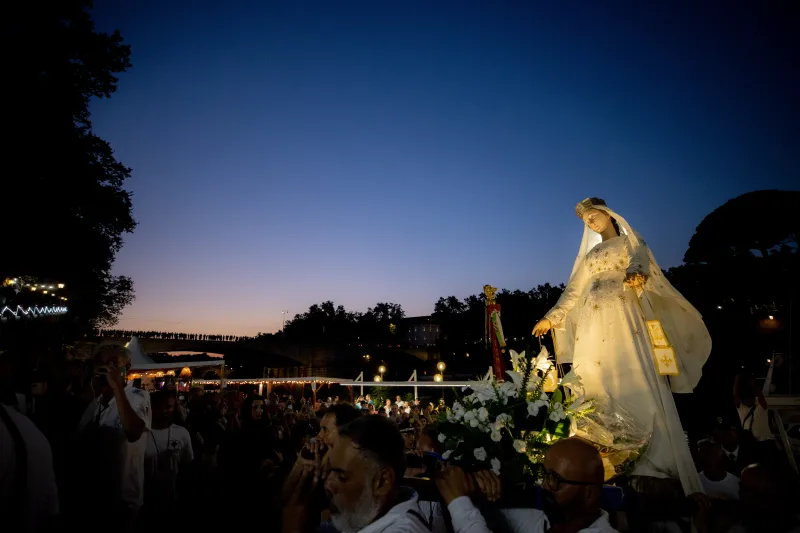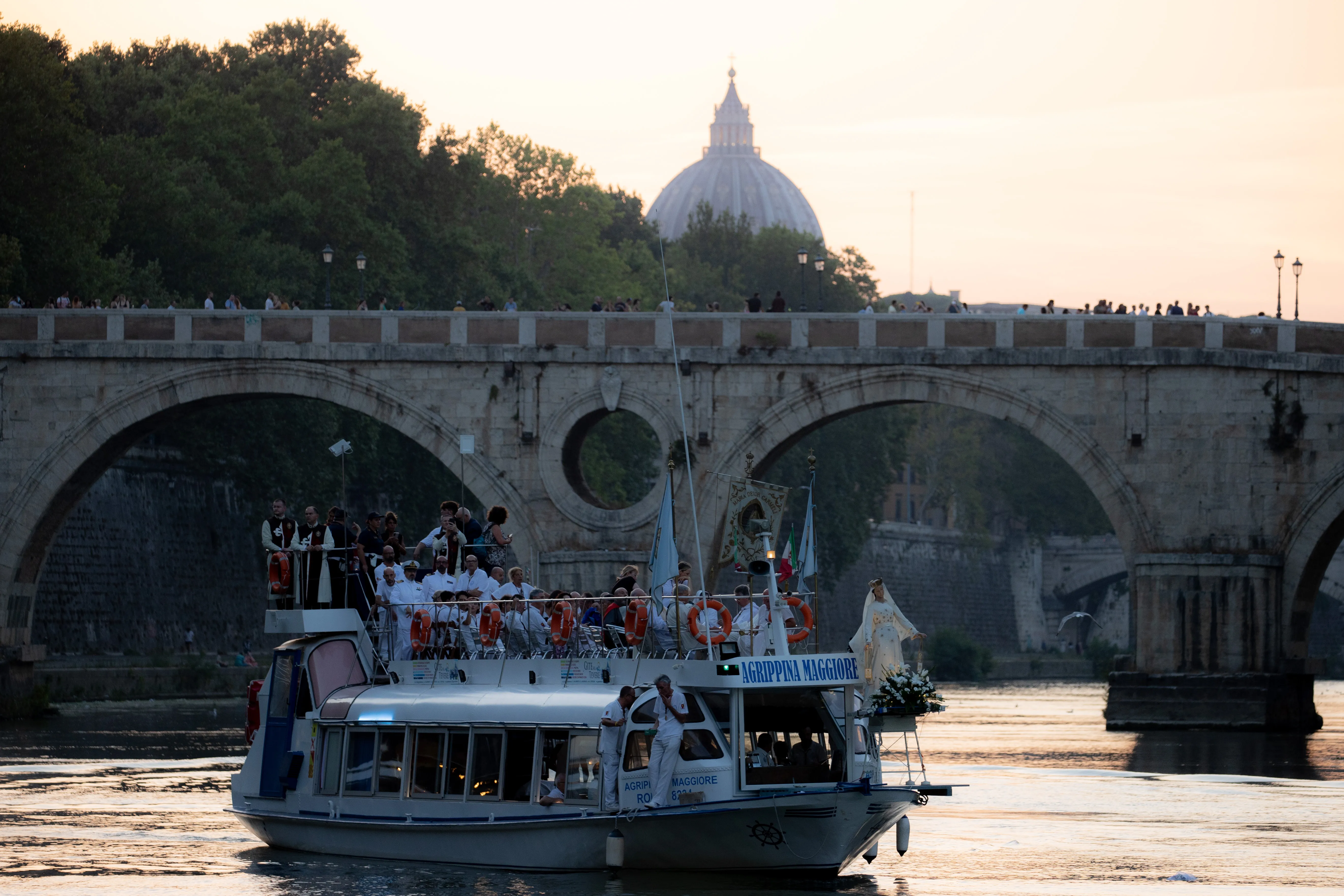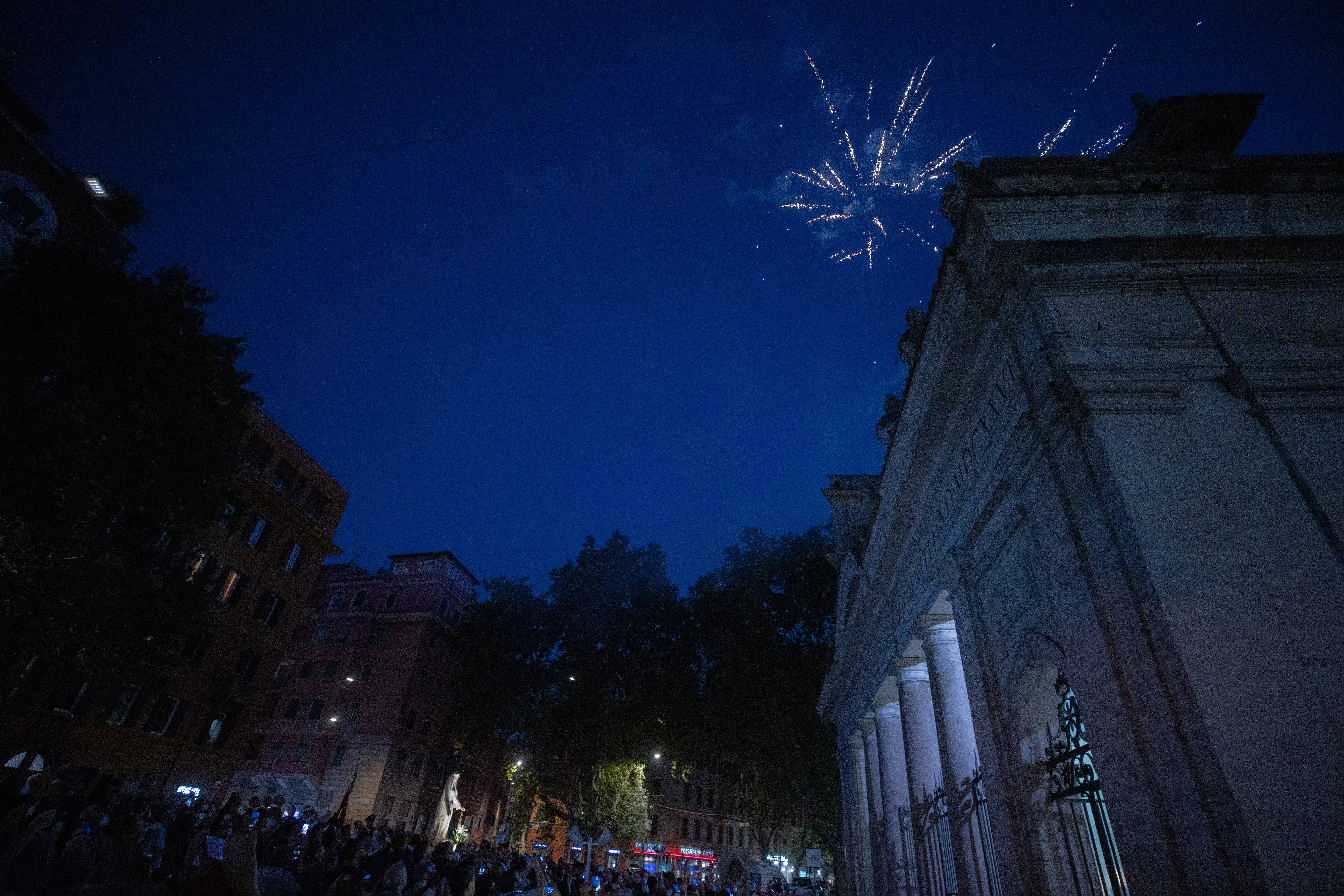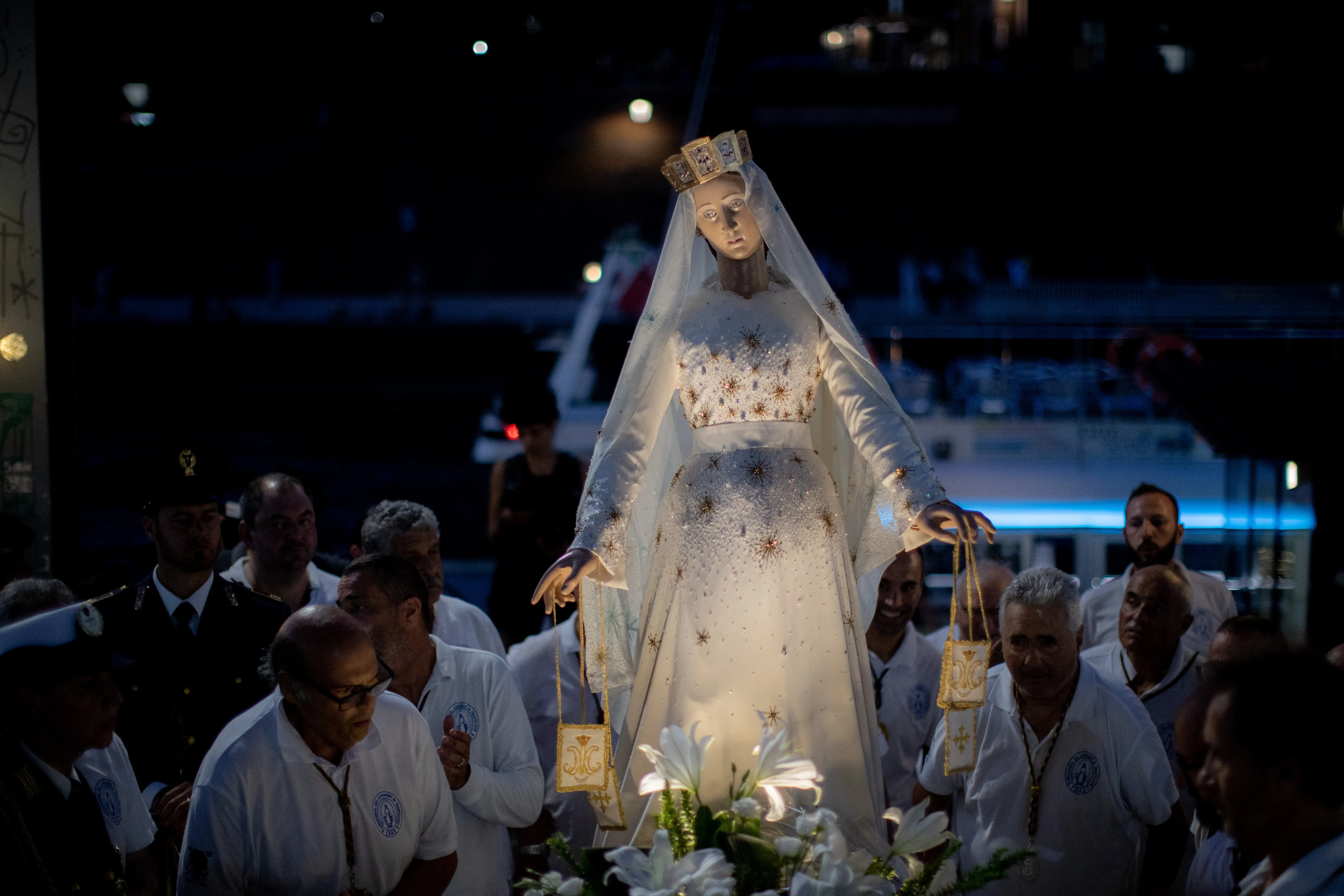
Rome Newsroom, Jul 26, 2022 / 08:17 am (CNA).
Rome’s nine-day celebration of Our Lady of Mount Carmel culminated Sunday with a floating Marian procession in a boat down the Tiber River.
As the sun set over the Eternal City, a life size statue of the Blessed Virgin Mary perched on the bow of the Agrippina Maggiore led the boat on a short cruise on the ancient waterway to Rome’s Trastevere neighborhood.

The procession was part of a Roman tradition that dates back nearly 500 years. Locals call the celebration the Festa de’ Noantri, which translates from Roman dialect as “ours.”
According to tradition, fishermen found a statue of the Virgin Mary at the mouth of the Tiber River after a storm in 1535. The statue was given to the local Carmelites based in Trastevere who dedicated it to Our Lady of Mount Carmel.
The festival kicked off on July 16, the feast of Our Lady of Mount Carmel, when the Marian statue was carried out of the Church of Saint Agatha in Trastevere to the Basilica of St. Chrysogonus, where it remained until the much-awaited river procession on July 24.
Romans celebrated with fireworks at the end of the procession when the Marian statue arrived back at her home church in Trastevere, where Our Lady of Mount Carmel is considered the patron of the neighborhood.

This year marked the first time that the Roman tradition was able to take place in its full form since the start of the COVID-19 pandemic.
Pietro Solfizi, the head of the Archconfraternity of Carmelites in Trastevere, said that Our Lady of Mount Carmel is seen in the neighborhood as a “refuge where we can pray and entrust our thoughts and supplications.”
“For us in the confraternity, Our Lady of Mount Carmel represents the devotion that we have experienced since we were children,” he told ACI Prensa, CNA’s Spanish-language news partner.
“In fact, even as children our parents used to take us to the Church of Saint Agatha to participate in the procession.”
Solfizi noted that the organizers of the Festa de’ Noantri also raised funds for charity. He said that the prayer intentions during the procession are always dedicated “to the most in need, the poor, the marginalized, the migrants” and in particular this year “for peace in the world and an end to all wars.”
During the procession, the Marian statue was illuminated in a white dress with gold stars and held large scapulars in each of her hands.

The word “scapular” comes from the Latin “scapulae,” which means “shoulders” and was originally an overlapping article of clothing worn over the shoulders by monks at work. It consists of a string that is worn around the neck with two small pieces of brown cloth attached. One is placed on the chest and the other on the back, and it is usually worn underneath clothing.
According to tradition, the scapular, as it is now known, was given by the Virgin Mary herself to St. Simon Stock on July 16, 1251.
Mary told him: “It must be a sign and a privilege for you and for all Carmelites: Whoever dies wearing the scapular will not suffer eternal fire.” Later, the Church extended the use of the scapular to the laity.
St. Alphonsus Liguori, a doctor of the Church, said: “Just as men are proud that others wear their uniform, so Our Lady, Mother Mary, is pleased when her servants wear their scapular as proof that they have dedicated themselves to her service, and they are members of the family of the Mother of God.”
If you value the news and views Catholic World Report provides, please consider donating to support our efforts. Your contribution will help us continue to make CWR available to all readers worldwide for free, without a subscription. Thank you for your generosity!
Click here for more information on donating to CWR. Click here to sign up for our newsletter.




Leave a Reply